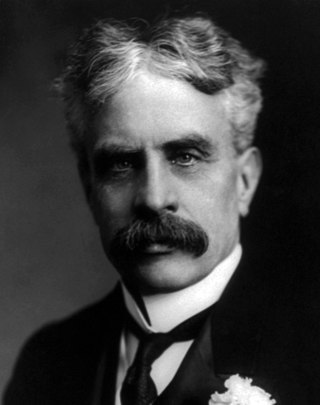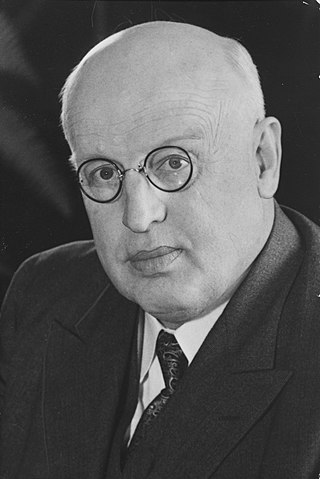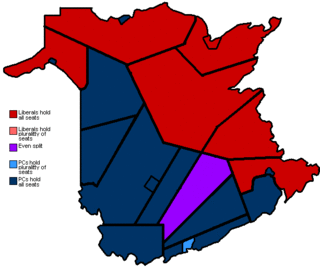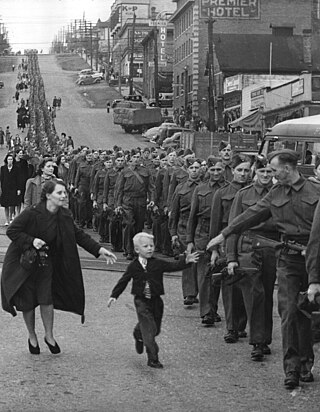The Progressive Party of Canada, formally the National Progressive Party, was a federal-level political party in Canada in the 1920s until 1930. It was linked with the provincial United Farmers parties in several provinces, and it spawned the Progressive Party of Saskatchewan, and the Progressive Party of Manitoba, which formed the government of that province. The Progressive Party was part of the farmers' political movement that included federal and provincial Progressive and United Farmers' parties.

The 1867 Canadian federal election was held from August 7 to September 20, 1867, and was the first election for the new country of Canada. It was held to elect members representing electoral districts in the provinces of Nova Scotia, New Brunswick, Ontario and Quebec to the House of Commons of the 1st Canadian Parliament. The provinces of Manitoba (1870) and British Columbia (1871) were created during the term of the 1st Parliament of Canada and were not part of this election.
The New Brunswick New Democratic Party is a social-democratic provincial political party in New Brunswick, Canada linked with the federal New Democratic Party (NDP).

The 1917 Canadian federal election was held on December 17, 1917, to elect members of the House of Commons of Canada of the 13th Parliament of Canada. Described by historian Michael Bliss as the "most bitter election in Canadian history", it was fought mainly over the issue of conscription. The election resulted in Prime Minister Sir Robert Borden's Unionist government elected with a strong majority and the largest percentage of the popular vote for any party in Canadian history.

The 1917 Alberta general election was held on 7 June 1917 to elect members of the Legislative Assembly of Alberta. The Liberals won a fourth term in office, defeating the Conservative Party of Edward Michener.

The 1935 Alberta general election was held on August 22, 1935, to elect members of the Legislative Assembly of Alberta. The newly founded Social Credit Party of Alberta won a sweeping victory, unseating the 14-year government of the United Farmers of Alberta. It was one of only five times that Alberta has changed governments.

The 1920 British Columbia general election was the fifteenth general election for the Province of British Columbia, Canada. It was held to elect members of the Legislative Assembly of British Columbia. The election was called on October 23, 1920, and held on December 1, 1920. The new legislature met for the first time on February 8, 1921.

The 1974 New Brunswick general election was held on November 18, 1974, to elect 58 members to the 48th New Brunswick Legislative Assembly, the governing house of the province of New Brunswick, Canada. It saw Richard Hatfield's Progressive Conservative Party of New Brunswick win its second majority government with a gain of one seat despite losing the popular vote to Robert J. Higgins's New Brunswick Liberal Party. For the second election in a row, the Conservatives received a majority in the parliament despite receiving fewer votes than the Liberals.

The 1919 Ontario general election, held on October 20, 1919, elected 111 Members of the 15th Legislative Assembly of Ontario ("MLAs"). The United Farmers of Ontario captured the most seats but only a minority of the legislature. They joined with 11 Labour MPPs and three others to form a coalition government, ending the 14-year rule of Ontario's Conservatives. This is one of the few examples of coalition government in Canadian history.
The 1927 Manitoba general election was held on 28 June 1927 to elect Members of the Legislative Assembly of the Province of Manitoba, Canada. The result was a second consecutive victory for Manitoba farmers, following its 1922 win.

The 1970 New Brunswick general election was held on October 26, 1970, to elect 58 members to the 47th New Brunswick Legislative Assembly, the governing house of the province of New Brunswick, Canada. It saw the Liberals defeated, and a new Conservative government take over in the Canadian Province of New Brunswick.

The 1960 New Brunswick general election was held on June 27, 1960, to elect 52 members to the 44th New Brunswick Legislative Assembly, the governing house of the province of New Brunswick, Canada. The election resulted in the defeat of the incumbent Conservative government of Hugh John Flemming by the Liberals led by Louis Robichaud.

The 1935 New Brunswick general election was held on June 27, 1935, to elect 48 members to the 38th New Brunswick Legislative Assembly, the governing house of the province of New Brunswick, Canada. The incumbent Conservative government of Leonard Percy de Wolfe Tilley was defeated.

During the World Wars and Interwar Years, 1914–1947, Canada experienced economic gain, more freedom for women, and new technological advancements. There were severe political tensions over issues of war and ethnicity, and heavy military casualties. The Great Depression hit Canada hard, especially in export-oriented mining and farming communities, and in urban factory districts.
The 1920 Nova Scotia general election was held on 27 July 1920 to elect members of the 37th House of Assembly of the Province of Nova Scotia, Canada. It was won by the Liberal party.

The 1930 New Brunswick general election was held on 18 June 1930, to elect 48 members to the 37th New Brunswick Legislative Assembly, the governing house of the province of New Brunswick, Canada. Although political parties had no standing in law, thirty-one MLAs declared themselves to be Conservatives, and seventeen declared themselves to be Liberals.

The 1925 New Brunswick general election was held on 10 August 1925, to elect 48 members to the 36th New Brunswick Legislative Assembly, the governing house of the province of New Brunswick, Canada. Although political parties had no standing in law, thirty-seven MLAs declared themselves to be Conservatives, and eleven declared themselves to be Liberals resulting in the defeat of the government of Peter Veniot.
The 1917 New Brunswick general election was held on 24 February 1917, to elect 48 members to the 34th New Brunswick Legislative Assembly, the governing house of the province of New Brunswick, Canada. Although political parties had no standing in law, the twenty-one MLAs that formed the government declared themselves to be Conservatives, while the twenty-seven opposition MLAs declared themselves to be Liberals.

New Brunswick has had, since the Legislative Council was abolished by an act passed on 16 April 1891, a unicameral legislature called the Legislative Assembly of New Brunswick with 49 seats. The legislature functions according to the Westminster system of government. Elections are now held at least every five years but may be called at any time by the lieutenant governor on consultation with the premier.

Women's suffrage in Canada occurred at different times in different jurisdictions to different demographics of women. Women's right to vote began in the three prairie provinces. In 1916, suffrage was earned by women in Manitoba, Saskatchewan, and Alberta. The federal government granted limited war-time suffrage to some women in 1917 and followed with full suffrage in 1918, at least, granting it on same basis as men, that is, certain races and status were excluded from voting in federal elections prior to 1960.















